I've often observed that this is a school with great stability and momentum. We have a larger population ninth and tenth graders than most small schools, and we have low attrition, resulting in a high number of experienced students returning each year. This creates a kind of gravity which draws first-year students into our ways, our customs, our procedures.

But this phenomenon is exaggerated at the adult level, where we retain the great majority of teachers, administrators and staff over decades. So, four years from now, not one currently enrolled student will be here, yet the ethos...the vibe...the nature of assemblies...the quality of relationships...even the curriculum, will be similar to what we know today. Proctor has a great deal of "institutional memory," and that's a very good thing.
Today, we observed our 44th Earth Day at Proctor, and everyone knew what to do. Three 90-minute workshops and a special assembly replaced a Tuesday schedule, as we took a break to acknowledge the finite nature of this beautiful planet. Some of the workshops included academics, such as one underscoring the reality of Climate Science based on evidence.
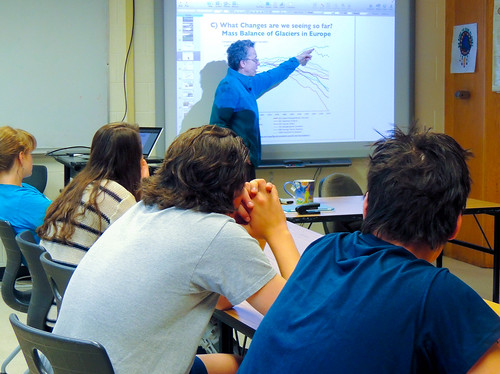
But most offered outdoor activities: simple community service, nature hikes, campus projects. Students prepped the school's prodigious organic garden.
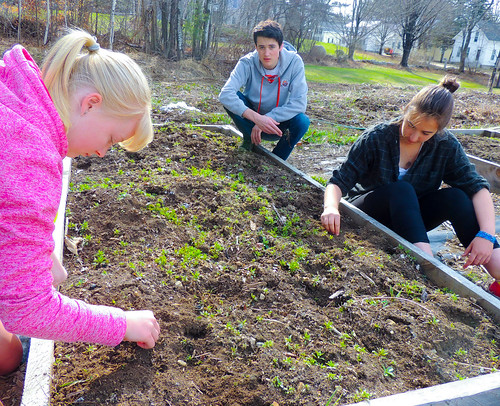
While members of the same group selected vegetable seeds to start in the greenhouse.

Others prepared compost.
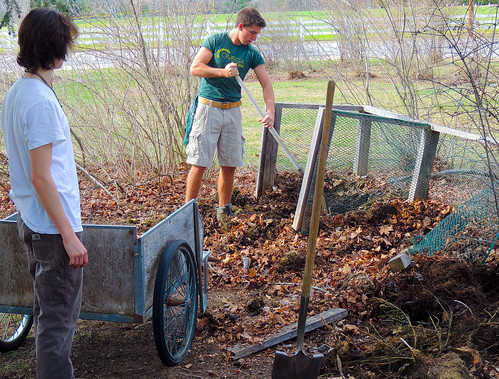
Another group planted hardy, early vegetables at the elementary school.
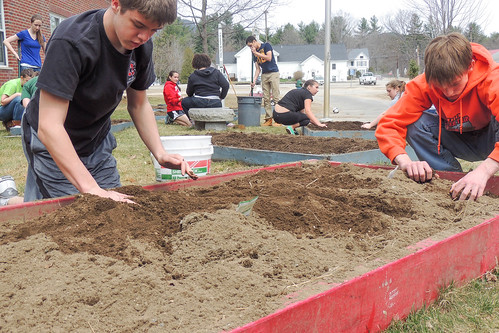
Up on the side of Ragged Mountain, overlooking pristine Mud Pond, a group applies rough siding to an Adirondack shelter that promises to be a great destination for years to come.
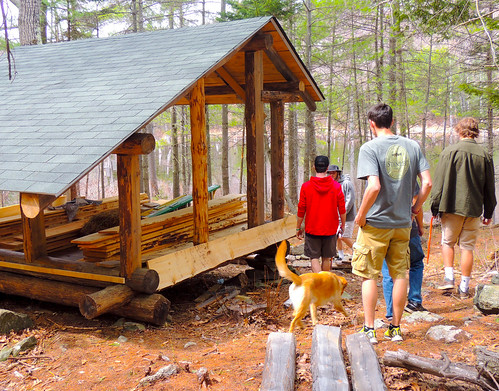
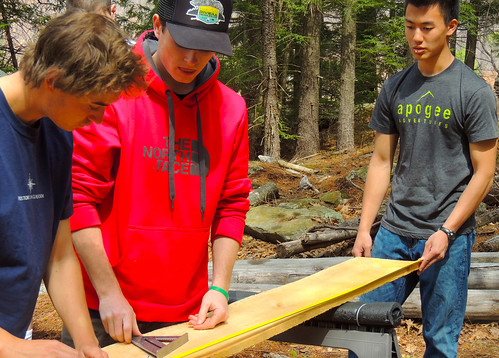
On the way down from Mud Pond, I am accosted by a group on a nature hike after studying exponential population growth scenarios.
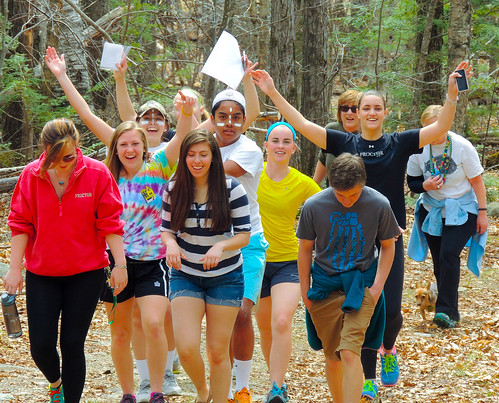
They're tigers!
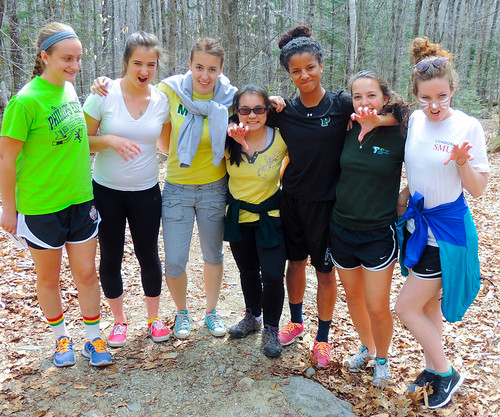
Out at Proctor's Elbow Pond facility, a group constructs a huge dream-catcher out of local found objects. I'm told this is called "land art."
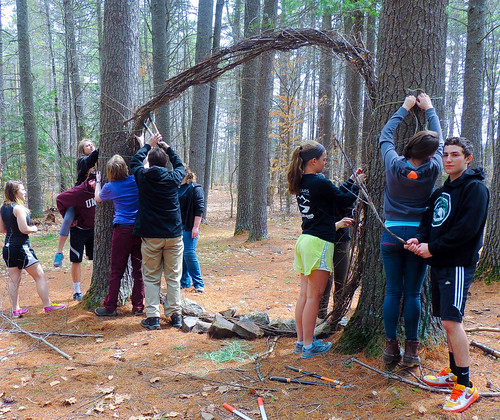
Just a stone's throw away, serious anglers watch bobbers sit very still.

These boys are down at the southern egress of the pond....watching bobbers.
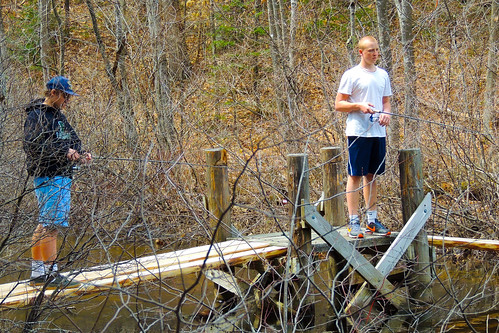
On the primitive suspension bridge first installed by students under the direction of Bob Wilson in 1972 (and subsequently improved,) we measure the volume of water passing in the Blackwater River. Students measure the depth and width of the river, providing rectagles of square footage and measure water flow within each five-foot-wide rectangle using an impeller wired to a display calculator.

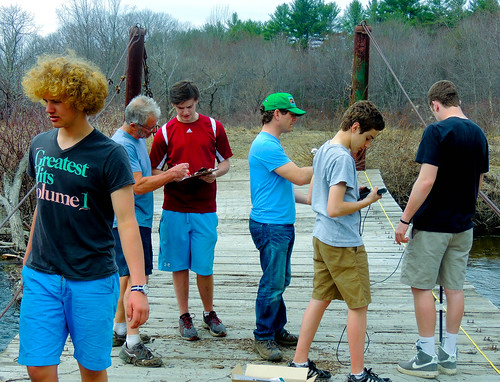
The calculus of three different workshops yield similar results: approximately 300 cubic feet per second of water volume passing under the bridge. Of course, there's that immense snag which disrupts our readings. Ben is motivated to solve this problem!
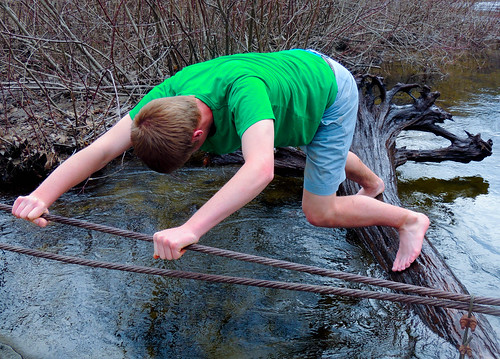
And so it goes. Another Earth Day, not entirely different than the last, and perhaps framing future Earth Days. That's not a bad thing.
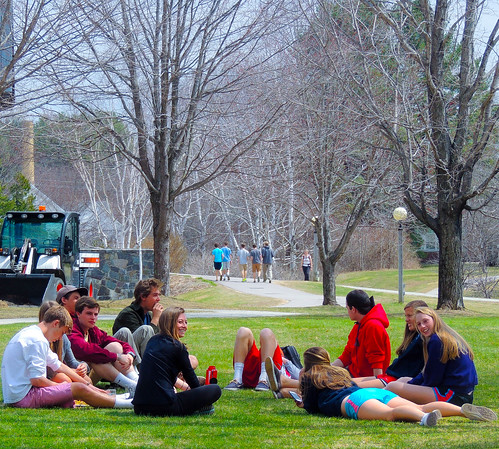
The community is grateful to Alan McIntyre, and all those who make every Earth Day a success.






























